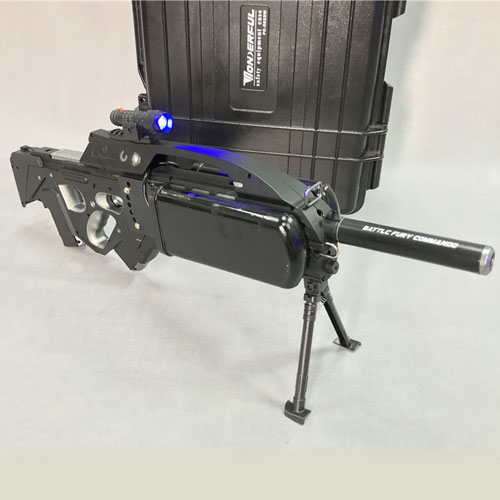Since drones first appeared, criminals have been finding increasingly creative ways to use drones for illicit purposes. As the trend continues, however, local security experts aren't simply sitting back and watching.
Instead, many creative solutions have been developed to aid in the early detection of drones and reduce potential risks to businesses and civilians. Below are 7 key components of a modern drone detection system.
1. Radar detection
Radar detection does exist in drones, however, it is one of the effective forms of spotting them. Traditional aircraft radar is suitable for picking up larger vehicles traveling through standard flight paths.
However, due to the size of drones and their ability to fly at such low altitudes, it can be difficult to pick them up by radar. In fact, in 2015, a drone famously crashed into the White House lawn. All radars failed to detect it, only by sight.
2. Video detection
Also, video detection is not one of the most effective drone detection systems. This is because various factors, such as weather and seasonality, can make it difficult for videos to spot low-flying drones. However, it does have its uses.
That said, video detection can be very useful for recording the event the drone was spotted and the subsequent process of viewing footage. This allows for enhanced capabilities of other forms of counter-drone technology.
3. Geofencing
Geofencing is proving to be an increasingly popular counter-drone technology, especially in places like prisons and airports. It works by creating an invisible barrier around the site through a combination of RFID (local radio frequency identification), adding GPS network connectivity such as Wi-Fi and Bluetooth.
Then, once the drone crosses the fence, the site owner will be notified. To help improve the technology and make it more effective, many drone manufacturers are now starting to build geofence alerts into their drones. Then, if the pilots fly the drone into restricted airspace, they will be notified immediately.
4. Radio frequency technology
Drones can become potentially dangerous if hackers try to control someone else's drone. However, there are ways to help prevent this from happening. This involves the use of RFID chips.
Radio frequencies are used to keep the drone's receiver and transmitter connected. RFID works by preventing other people on the same frequency from controlling the drone.
5. Audio detection
Audio detection is another form of anti-drone technology that has seen tremendous progress in recent years. The technology has been found to work well in quieter urban areas, where a very specific hum from drones can be detected.
This detection system allows them to spot drones with an accuracy of around 500 feet. However, identifying drones can be very difficult if the airspace they are entering is subject to significant noise pollution.
6 Drone jammers
As mentioned earlier, drones use radio frequencies to transmit information and operate efficiently. Jammers have the ability to disrupt this control. They do this by blasting electromagnetic noise. In a sense, they stopped any communication between the drone and the pilot.
Drone jammer is effective because they typically operate at 5.8Ghz or 2.4Ghz, which is the common frequency used by drones. That means they won't interfere with any larger, more important aircraft. Jammers can be mobile devices or larger built-in devices.

7. Heat detectors
Likewise, heat detection is a counter-drone technology that won't work in all environments. Thermal detection is very useful if used in remote areas. Protecting power plants surrounded by land is a good example.
If a drone is spotted near such a facility, security personnel can use their own drones equipped with heat detection technology to track down the drone's operator. However, if the facility is located in a busy urban environment, thermal detection is much less effective at finding suspects.





